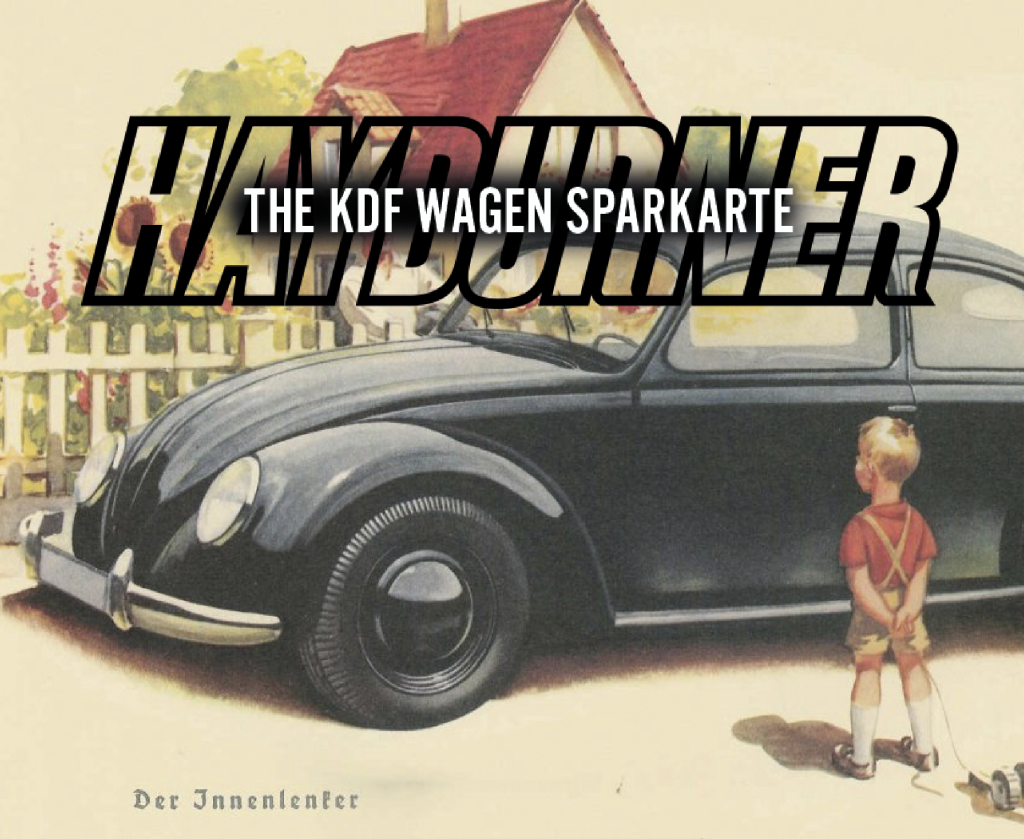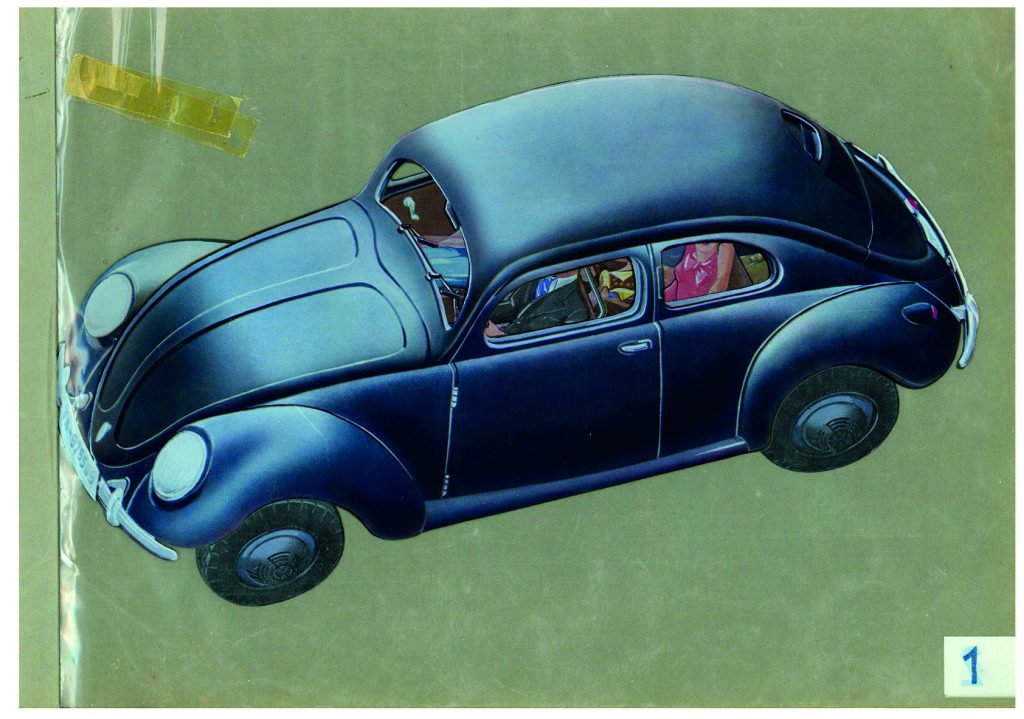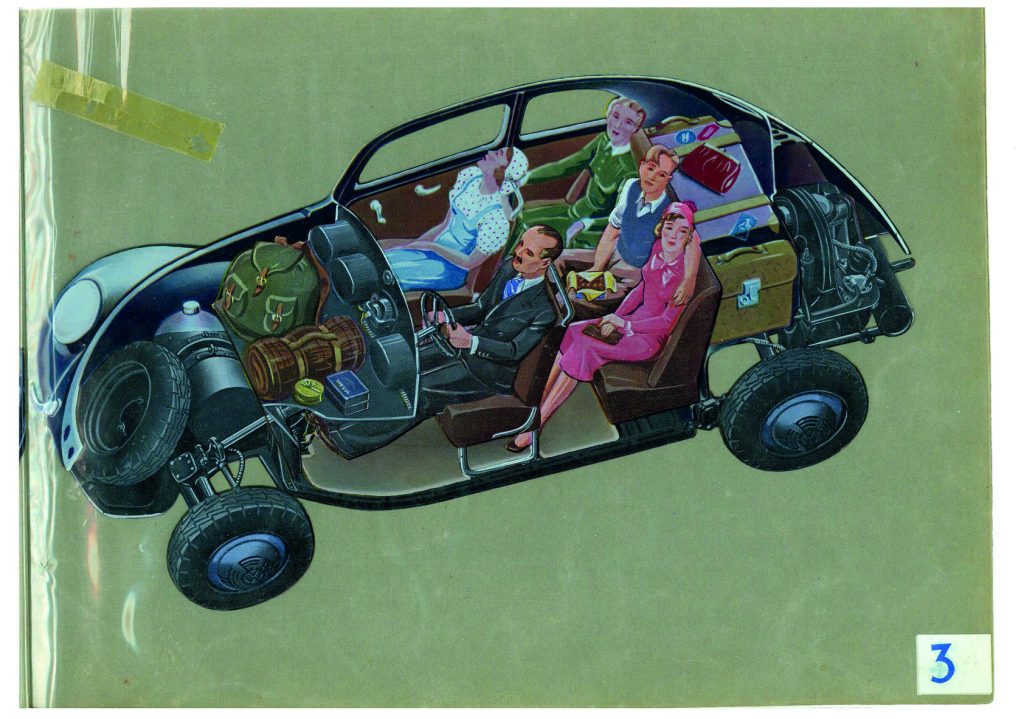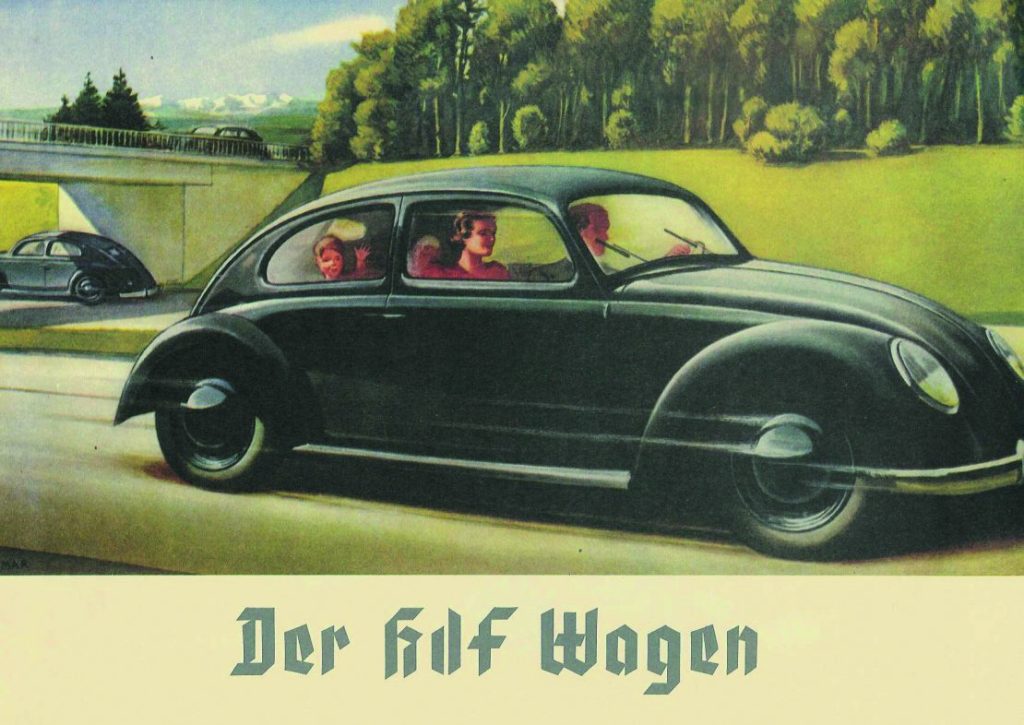The KDF-wagen Sparkarte

From the mid-1930s and before the beginning of WWII the Nazi Party had begun taking over Germany’s entire political system. As Adolph Hitler rose to power, he was determined to bring Germany up to the level of what he thought of as what the United States and other advanced economies had accomplished.

At the time, ideas were being bounced around to improve the quality of life of the German population. One of the first schemes was put in place because few people in Germany owned radios, so Hitler’s minister, Joseph Goebbels, introduced the Volksempfänger (People’s Receiver), a cheap and cheerful little wireless – short-wave so listeners couldn’t tune into foreign broadcasts.

This was a win-win for the Nazi Party, giving people an exciting new gadget and also a mainline to feed propaganda into the ears of the German population. Fridges were also a luxury item, so the Nazi government introduced the Volkskühlschrank (People’s Refrigerator). Soon many other products had similar names and similar intentions.

Another big project to improve the country was the birth of the Autobahn. Whether this was put in place to benefit the people or because his aggressive military campaigns would need a viable and established road system to move war materials is debatable.

Spinning the news that the roads were being built to generate jobs and spur national growth, an aggressive road-building campaign under Reichsautobahnen supervision began. The roads were the first high-speed limited-access roads in the world at the time, with the first completed being used for Grand Prix race car testing – Grand Prix being one of Hitler’s favourite pastimes.

With these new lifelines benefiting Nazi products and all-new road systems going up all over the country, the development and mass production of an affordable German vehicle made perfect sense: “just like the brilliant example of car ownership we see in America”, as Hitler said in 1936.

At the time, even the British had six times more cars relative to population. This was partly because German public transport was second to none. Germans mostly felt no need for cars. And had they wanted cars, they couldn’t have afforded them.

It was the Nazi Party’s job to convince the population that a privately owned automobile was just what every household needed and, more importantly, was easy to afford.
The vehicle was to be known as the “Strength through Joy Car” (Kraft durch Freude-Wagen, or KdF-Wagen). It was to be a car designed to hold four people, able to attain 100 kilometres per hour (66 mph) on reasonably level paved ground (which also happened to be the operational speed of Hitler’s new Reichsautobahn). It had to sell for less than 1000 Reichsmark (RM) (about $140 at the time). Costs were kept low by being built by forced labour, primarily from eastern Europe.


